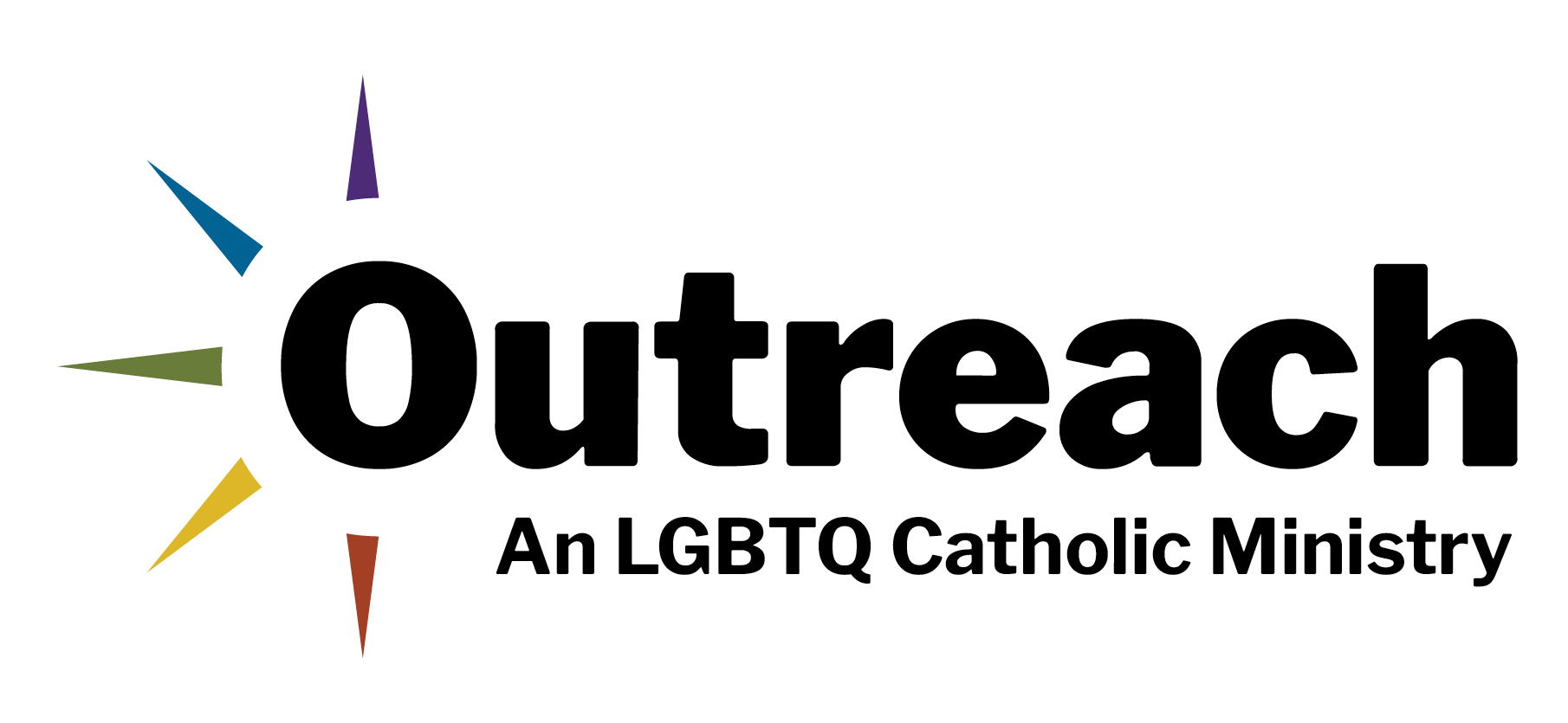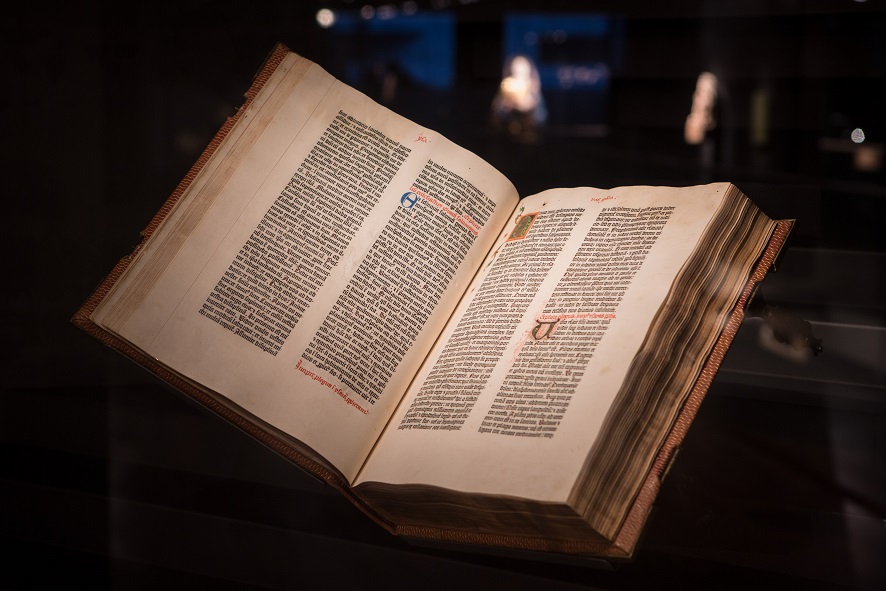I came out for the first time when I was 17 years old. Until then I had always felt undeniably and unquestionably loved by God and my parents. As a result of my coming out, I was sent to a young adult initiation retreat with a Jovenes Group, a Spanish ministry. The theme of the retreat was: “God loves you and so do we.”
While the members of the youth group were caring and loving, I immediately noticed the unspoken “God loves you, but…” coming from some of the invited speakers and preachers. Through comments they made when they were praying aloud, it became clear to me that God had an issue with homosexuality and the Bible somehow proved it. I wasn’t so sure I was loved by God after that, and a sense of shame replaced the sense of peace, so I went back into the closet. It would take me about a decade to fully snap out of it.
Almost 20 years later, this past April, Paulist Press published my first book titled LGBTQ Catholics: A Guide to Inclusive Ministry. The book is a 101 guide for all Catholics who want their parishes to be more welcoming. Among other things, the book addresses the need for inclusive ministry, tackles common myths and prejudices, breaks down steps to create an LGBTQ ministry, gives an overview of Catholic doctrine and includes many stories.
More than anything, the book is an invitation and a how-to guide for parishes across the world to replicate what welcoming parishes are already doing. It also includes an invitation for biblical scholars to engage in a much-needed debate and dialogue about the “clobber passages” on homosexuality.
Who is God? Does God love us? Is God a punishing God? Did God create LGBTQ people? What does Bible say about this topic? As LGBTQ Catholics, we often have to go through long journeys of discernment to arrive at a point of peace with God. Some of us find that peace away from religious circles, while others choose to stay. For those who stay, studying the Bible is often the first point of healing.
Here I offer a few tips that can help us on our journey of healing.
1). Be aware of where Scripture interpretations come from
First, we must realize that most Catholics’ understanding of the Bible comes from homilies, lay preachers, Catholic media and from family members who claim knowledge of God and the Bible. Are those preaching about the Bible fully formed to do so? The answer varies on a case-by-case basis. Our parish religious formation programs often focus on religious formation for children, which leaves little room for questioning and discernment, and there are few widespread religious formation opportunities for adults, other than marriage formation and perhaps confirmation.
We must also remember that until the mid-20th century, Catholics relied almost entirely on biblical interpretation by priests who may not have been well educated in biblical criticism. And many Catholics did not read the Bible on a regular basis. It wasn’t until 1943, when Pope Pius XII issued the encyclical Divino afflante Spiritu, that lay Catholics were encouraged to interpret the Bible ourselves. And only after Vatican II were Masses celebrated in local languages.
These are relatively new developments, and all Catholics are still learning to interpret the Bible. So how do we know if we, or others, are interpreting the Bible correctly?
In a recent article for Outreach, John R. Donahue, S.J., a renowned New Testament scholar, focuses almost entirely on Jesus and invites us to do the same. Inspired by this call, my first tip for interpretation is as follows: If a particular biblical interpretation does not result in simultaneous love of God, love of self and love of neighbor, then something is missing in that interpretation.
We must remember that the Bible is a collection of books, written by men, inspired by God and yet still written from the particular cultural, historical, socio-economic and political context in which each writer lived. In a way, the Bible describes a long journey of faith, with all its ups and downs, with the good, the bad, the ugly and the indifferent.
“If a particular biblical interpretation does not result in simultaneous love of God, love of self and love of neighbor, something is missing in that interpretation.”
For Christians, the culmination of our journey is Jesus. In the Gospel of Matthew, Jesus tells us to “not think that I have come to abolish the law or the prophets. I have come . . . to fulfill [it]” (5:17). Jesus reminds us that whatever the interpretations of the law and conceptions of God were at the time, the Son of God is the fulfillment of it all and the greatest commandment is to love God, our neighbors and ourselves.
This is true today more than ever. Any interpretation or quotations that are divorced from the biblical context and from the Gospels is incomplete.
2). Know that the “clobber passages” are not written in stone
Secondly, when it comes to homosexuality and the clobber passages, nothing is written in stone. What do I mean by this? Oh, where to start?
In another recent Outreach article, Amy-Jill Levine, one of the world’s leading Jewish biblical scholars, mentioned something that is almost a foreign concept in Catholic circles: the fact that in many of these passages we don’t really know what the author really meant.
I say this is a foreign concept because in Catholic circles there’s often rhetoric that uplifts the institutional Church as an all-knowing protector of the truth, which is partially true, but not in a rigid sense. As the Catechism reminds us, the Word of God is not written and mute, rather it is “incarnate and living” (CCC 108).
The catechism assigns the huge task, and burden, of interpreting the “incarnate and living Word” to the bishops, but it also reminds us that the interpretation must be done within “the living Tradition of the whole Church,” and that Sacred Scripture is written principally in the Church’s heart, rather than in documents and records. It also must be informed by the Holy Spirit (CCC 113).
The magisterium must be attentive to the sensus fidelium, as the catechism describes it, for “the faithful have an instinct for the truth of the Gospel, which enables them to recognize and endorse authentic Christian doctrine and practice, and to reject what is false.”
In a way, the sensus fidelium is informed by the lived experience of all the baptized. The bishops must interpret the Bible from the lived experience of the whole people of God, including those marginalized, and such interpretation must be open to the action of the Holy Spirit, whose manifestation in LGBTQ people’s lives shows God is still speaking.
But if a large part of the magisterium is far away from the lived experience of LGBTQ Catholics and other marginalized groups, the interpretation can only be incomplete.
In addition to the lack of closeness with marginalized groups, I believe there must be greater collaboration with biblical scholars from all walks of life. In the past, scholars have been reprimanded or actively discredited by the institutional church for focusing on the clobber passages and offering alternate interpretations.
The magisterium should actively encourage and offer room for biblical scholars to debate and dialogue about the clobber passages, and they should join that process of discernment. As Professor Levine reminds us, they might still not reach a conclusion about the original meaning of some texts, but the process itself would help the magisterium and the faithful as a whole identify some key areas for improvement.
The biggest area of improvement for the magisterium and the faithful, in my opinion, is the understanding that the word “homosexuality,” first used in biblical translations some 80 years ago, replaced an array of words and concepts in Greek, Hebrew and Aramaic. These words did not refer to loving, committed relationships between two consenting adults who choose to love each other for a lifetime.
The words originally used evolved over time and had different potential meanings, but almost none of them referred to what today are called same-sex civil unions or marriage. Furthermore, even if they remotely referred to such a concept as we understand it today, they were written in a particular context and scientific understanding that is different from our modern era.
The word “homosexuality” itself, and even the most understanding of LGBTQ orientations and identities, has evolved over the past 100 years. Now imagine the situation after another 2,000 or 4,000 years. When the American Psychiatric Association (APA) published its first edition of the Diagnostic and Statistical Manual of Mental Disorders (DSM) in 1952, homosexuality, and let me provide a trigger warning, was classified as a “sexual deviation” within the larger “sociopathic personality disturbance” category of personality disorders.
The sexual deviation diagnosis grouped together “homosexuality, pedophilia, fetishism and sexual sadism.” When homosexuality was first used in translations of the Bible, it was used in passages that described abuse of minors, forced prostitution, scenarios of abuse of power and much more. It wasn’t until 1973 that the APA removed that definition of homosexuality from the second edition of the DSM, but the damage had already been done.
Many in our church still conflate an LGBTQ identity or orientation with pedophilia, and that conflation is immoral, damaging and wrong to LGBTQ people. Some in the magisterium and in our church still have a long learning journey ahead, and biblical scholars, along with the lived experience of LGBTQ people and the Holy Spirit’s manifestation in our lives, should inform that journey. As LGBTQ Catholics, becoming aware of these areas of improvement and knowing that God loves us can bring some healing.
“My third tip for LGBTQ Catholics reading and interpreting the Bible is this: Listen to God’s voice in your heart and follow your conscience.”
3). Listen to God’s voice in your heart
Finally, my third tip for LGBTQ Catholics reading and interpreting the Bible is this: Listen to God’s voice in your heart and follow your conscience. This is also known as the “primacy of the conscience.” It’s cliché, I know, but I don’t believe there’s anything more important than this.
I started this article by telling you a little bit about my story. I’ve had to go through a long journey to be at peace with myself and, in part, I wish somebody could have saved me the ten-year struggle. Yet, I regret nothing. I knew God loved me, but I did not feel unconditionally loved by the community and I had to go through that journey to reconcile both. I am now on the other side.
The biggest tool in my journey, and the one thing for which I prayed to God during that decade, was discernment. Room for discernment is key in inclusive Catholic ministry. Each one of us LGBTQ Catholics is at a different part of our journey, and self-understanding and even our own views might change over time. Inclusive ministry should be open to all of us no matter what part of the journey we are in.
We should not be pressured to stay in the closet, but we can also wait to come out until it is physically, spiritually and financially safe. We are full human beings, not children. We can discern our vocation, orientation and identity, and should be empowered to do so. We are holy, loved and perfect the way we are.
God loves you, and she loves unconditionally.





0 Comments